State
Tribe Name
Art Type
short description
The Garia festival dance is largely celebrated among the tribes of Tripura, specifically by the Kokborok-speaking communities. The dance is of great socio-religical significance, especially for the Jamatia community honoring the deity Baba Garia, believed to bless the harvests and prosperity of families. This dance forms a part of the Garia Puja celebrated with rituals at the end of Chaitra. Festivities begin on the first day of Baishakh and continue for about seven days with songs, dance, and music as both young girls and boys celebrate with great vigor
Thumbnail
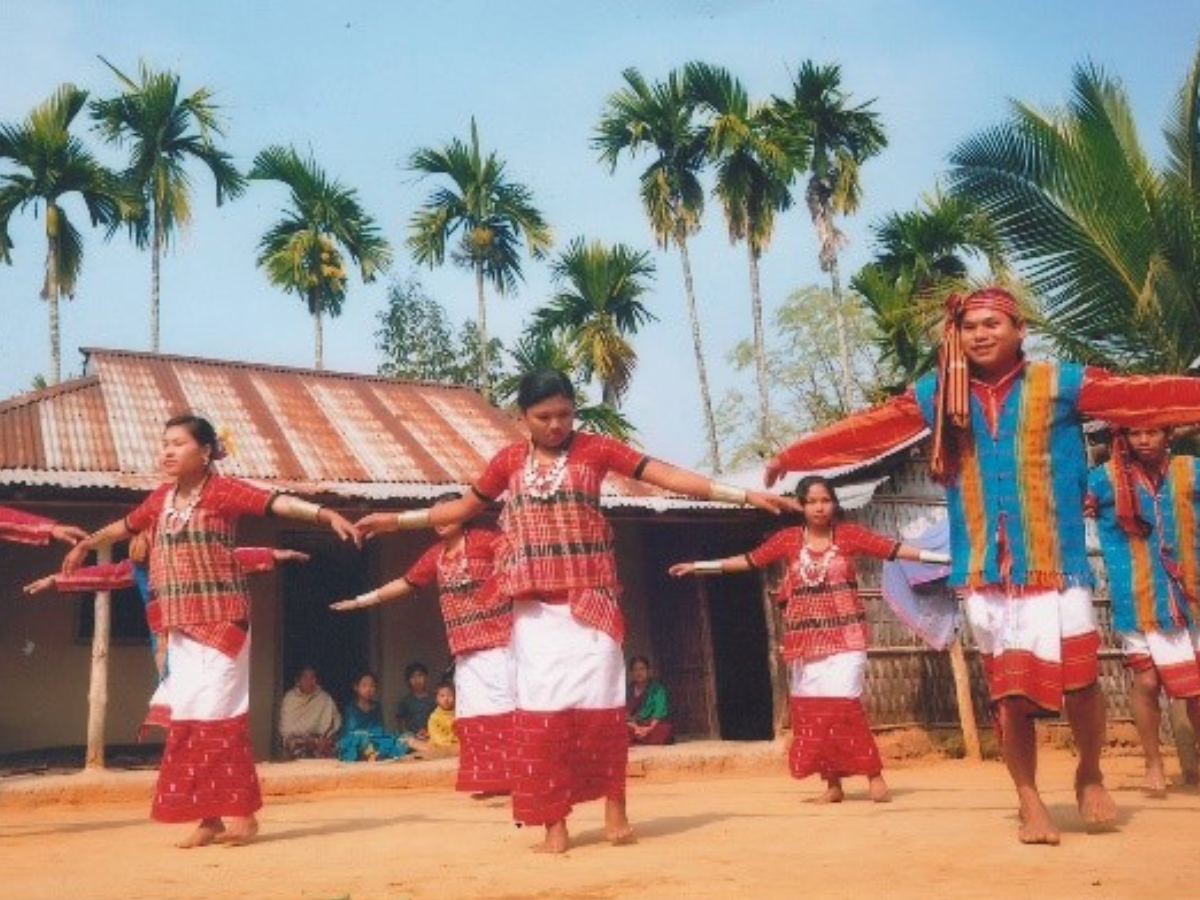
Filter Postion
Left
Filter Background
Off
Theme
Filter Header Image

content
Image
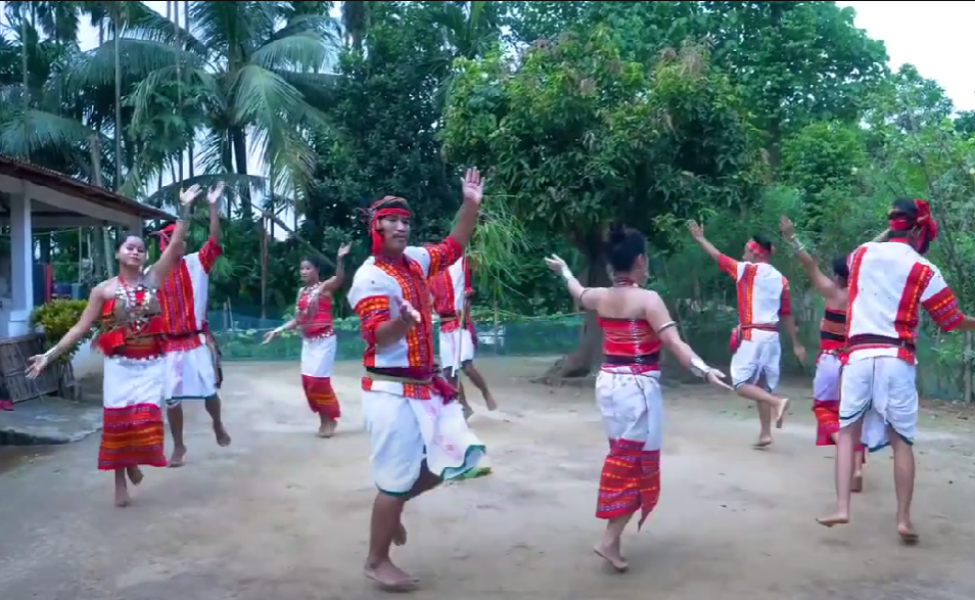
description
The Garia festival dance is largely celebrated among the tribes of Tripura, specifically by the Kokborok-speaking communities. The dance is of great socio-religical significance, especially for the Jamatia community honoring the deity Baba Garia, believed to bless the harvests and prosperity of families. This dance forms a part of the Garia Puja celebrated with rituals at the end of Chaitra. Festivities begin on the first day of Baishakh and continue for about seven days with songs, dance, and music as both young girls and boys celebrate with great vigor
Image Mode
landscape
Image
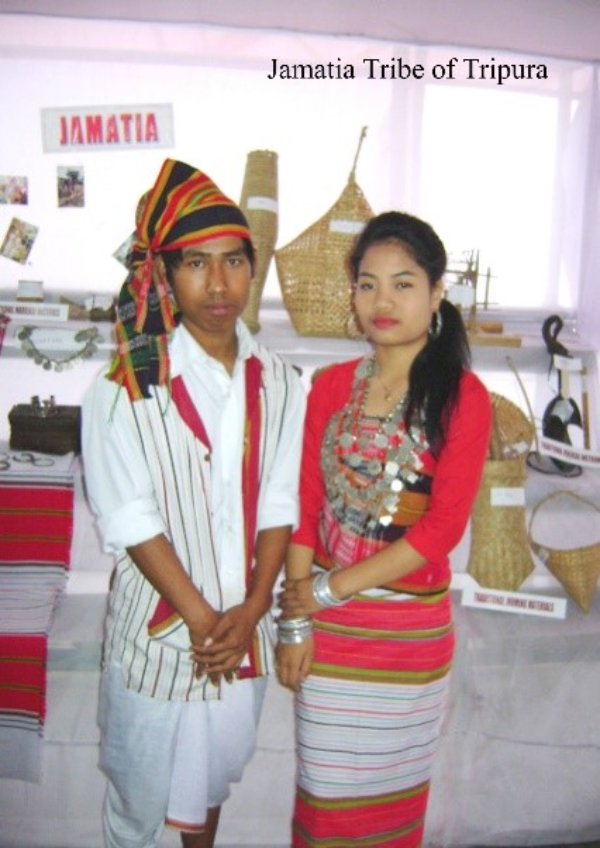
description
The Jamatia tribe is one of the significant ethnic communities in Tripura, India, and essentially speak Kokborok. Their agriculture has been their stronghold since ancient times and involved rice and other cultivation. Their society is clan-based and stresses community and family ties. Festivals characterize the Jamatia communities with their dances, songs, and crafts that describe the relationship between these people and nature and spirituality. Hence, they worship deities associated with agriculture, which helps continue their cultural identity despite modern challenges
Image Mode
portrait
Image
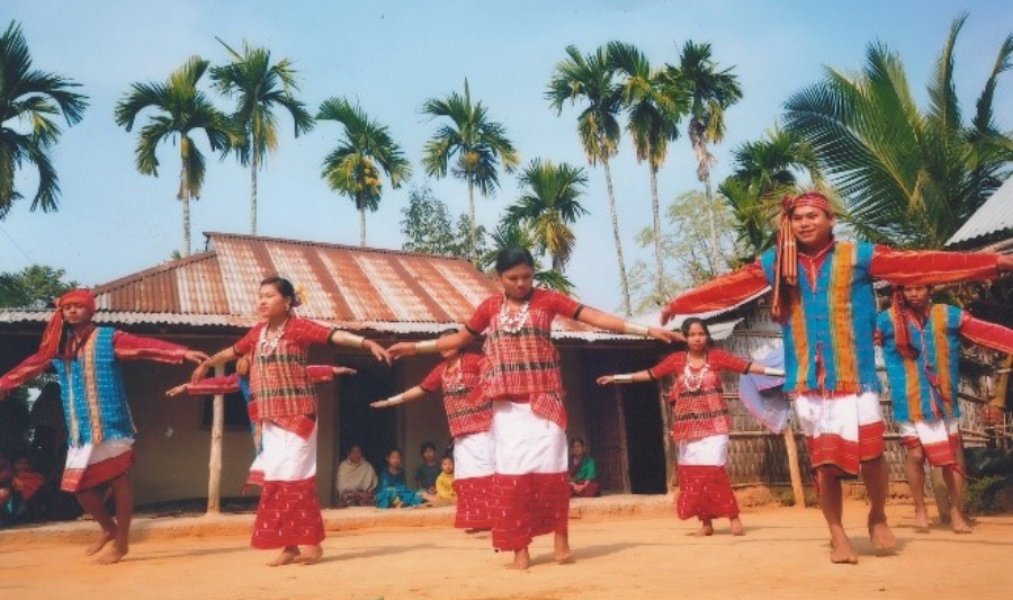
description
The costumes and jewelry of the Garia dance are truly fit to illustrate the vibrancy of the culture practiced by the Jamatia tribe. Typical male attire consists of a colored shirt, dhoti, or Dhoti, oftentimes beautifully decorated with various designs. Women perform in a knee-length saree called "rignai" worn with a "risa" as a wrap, whereas females wear silver chains, tasted locally as Rangbwtang, bangles known as Boliya, and silver earrings called brindaful. While dancing, both male and female performers tend to compliment their outfits with fresh flowers in their hair, thus projecting their status and celebrating their identity
Image Mode
landscape
Image
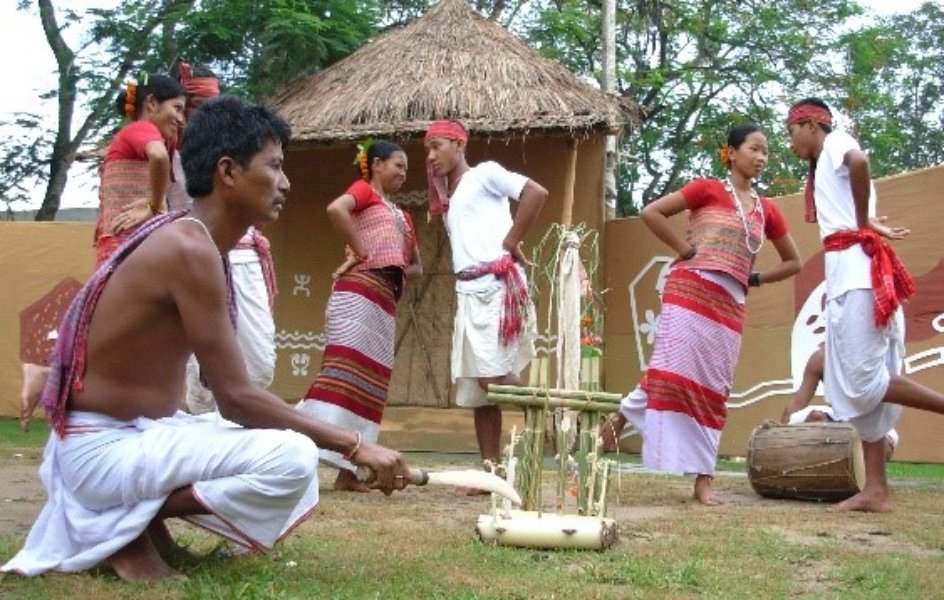
description
The Garia dance is primarily accompanied by this very joyous instrumentation, epitomizing the festival spirit. The kham or the large drum stands as a strong rhythmic companion, offering energy to the dance. Kham keeps on playing with it. Another accompaniment in the set is a warm-toned string instrument, the sarinda, which conjures up beautiful mellow harmonic effects. Further sweet melody is provided by the sumui flute, brightening up the whole atmosphere. Clapping bamboo add to the fun and energy of the Garia dance music, thanks to their unmistakable sound from the wakhop
Image Mode
landscape
promoted
Off
Verified
On
